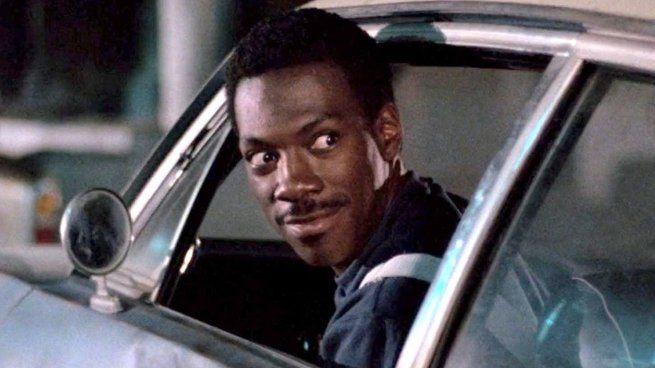“A handful of arrows”the book of Maria Gainza Published in 2024 by the Anagrama publishing house, it opens with a story starring Francis Ford Coppola. In 2008, when Gainza He wrote art reviews in the magazine “Radar” of “Página 12”, Coppola She was preparing to film in Argentina and became friends with her husband. One night, without even looking at her, as if speaking to a ghost, Coppola He told him: “The artist comes into the world with a quiver containing a limited number of golden arrows. He can shoot all his arrows as a young man, or shoot them as an adult, or even as an old man. You can also launch them little by little, spaced out over the years”. Gainza He asked if you can control the shooting of arrows. “Not much” –he responded-. “It just happens. And only at the end of a life can the periodicity of the launches be evaluated”.
The filmmaker’s reflection is significant. And although Gainza he forgot the details of the intense affair Coppolaassures that he clearly remembers the story of the quiver and the golden arrows. “I kept that information without knowing that it would be useful to me later. Of course, by telling me that little fable, Coppola was being self-referential, but I think he was also giving me a gift in advance: he was speaking to the person I still didn’t see in myself. Maybe I was talking to her that night when I was looking towards what I thought was nothingness.”
The episode is revealing. Gainza leave behind Coppola and she assumes the starring role herself; He writes in the first person and concludes this first chapter looking from above, with his quiver on his shoulder and a golden arrow in his hand.
A little over a decade ago, in 2014, the Mansalva publishing house published “The optic nerve”Five years later, already in Anagrama and translated into 15 languages, the book was part of the list of the 100 favorite titles of the “New York Times”. Shortly before, the novel “The black light”a story about art forgeries, had put into tension the intersections between reality and fiction, frequent in the stories of Gainza. Its readers, some better informed than others, discussed the veracity of the data and the existence of the characters. Today, “A handful of arrows”has solid research as support and, however, even verifiable facts generate doubts about the always blurred limits of reality.
To art collecting, Gainza He dedicates numerous analyzes to it. In front of Plaza San Martín, his collector displays “an essay on personal desires”according to the quote taken from Marcelo Pacheco. The set of Latin American paintings is a rarity that discovers a certain creativity and designs a “visual biography”. As time goes by, with a hoarding zeal the collector covers the walls of the same apartment from floor to ceiling. Gainza He handles the most diverse knowledge with agility and applies it to the analysis of works. Find the time suspended in the monoliths of Aizenberg and compares them with “The machine that stopped time” of Dino Buzzati. The negative aspects of collecting are expressed bluntly by Edmond de Goncourtauthor of the text “The house of an artist.” There he describes in “sick detail” the accumulation produced by “shopping orgies.” Then also Goncourt he denounces the careless ostentation: “There are collections of art objects that awaken neither passion, nor taste, nor intelligence, nothing more than that they constitute the brutal victory of wealth.”
The passion for literature, an infallible memory for quotes educated in childhood and the pleasure that study brings, resulted in texts that oscillate between the story and the essay, oblivious to the obscurantism of criticism. Gainza deepens the psychological analysis of the characters, including herself. And he does not hesitate to show his ideas, his feelings and, to some extent, his intimacy. “The optic nerve” It is a sophisticated book, written by the rebellious daughter of the powerful owner of the newspaper “La Prensa” who hates the busy life and seeks solace in art and museums. “A handful of arrows” allows us to guess the maturity of the writer. .
As in passing, he says that the encounters with Coppola They were interrupted when her husband, who died in 2015, became seriously ill. It gives a glimpse of the painful round of public hospitals, but does not deepen the pain. However, there is a chilling chapter, “Diary of my short circuits”. The protagonist, in this case an alter ego of Gainzais admitted to an institution where she feels like a prisoner and is being treated for a neurological disease. There he tests his special ability to let his imagination fly and bring it back with the hallucinated universes he finds. The amalgamation with one’s own life is the strength of writing.
In that hospital, with a device similar to a cell phone, she undertakes “teleportations,” trips that take her to California where she meets an artist named Bodhi Wind that paints three swimming pools in the heat of the desert. in the movie “Three women” of Robert Altmantwo of these pools appear. Gainza surprises with the extraordinary story of Bodhi Wind painting, surrounded by rattlesnakes and with the mystery of his early death.
There is a chapter crossed by the philosophy of Thoreau and his theories about nature and the human condition. During a trip to Walden Pond while studying in Boston, Gainza meets a character who investigates the theft of one of the 35 paintings that Vermeer painted in his life.
The painting belonged to the museum donated by Isabella Stewart Gardnerowner of the largest collection of European art in the United States. The colorful researcher affirms that there are works that “expand human nature.” And this is how he defines the effect that contemplation of art can have: “Looking at a painting, looking at it live, is like taking an artificial chemical, like swallowing a poppy, something whose effect on a mental level allows you to free yourself from the body, from anxiety always.” obsessed with herself. “The theft of these paintings, especially the Vermeer, has denied me a way to transcend.”
Among the figures present in the book, is Guillermo Kuitca. Then the photographer Alberto Goldensteinwhen he finds his style in Non-style. Finally, the adventurous life of the talented Maria Simoncaptures the reader who does not understand the limited significance of the artist from Tucumán.
Source: Ambito
I am a 24-year-old writer and journalist who has been working in the news industry for the past two years. I write primarily about market news, so if you’re looking for insights into what’s going on in the stock market or economic indicators, you’ve come to the right place. I also dabble in writing articles on lifestyle trends and pop culture news.




